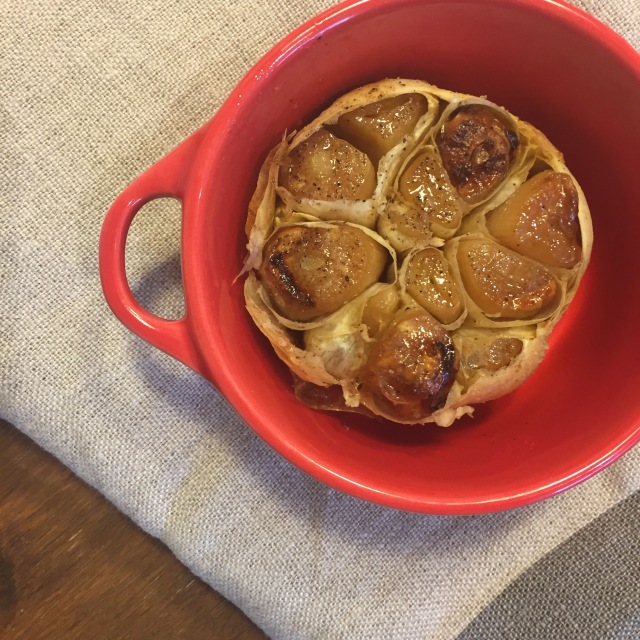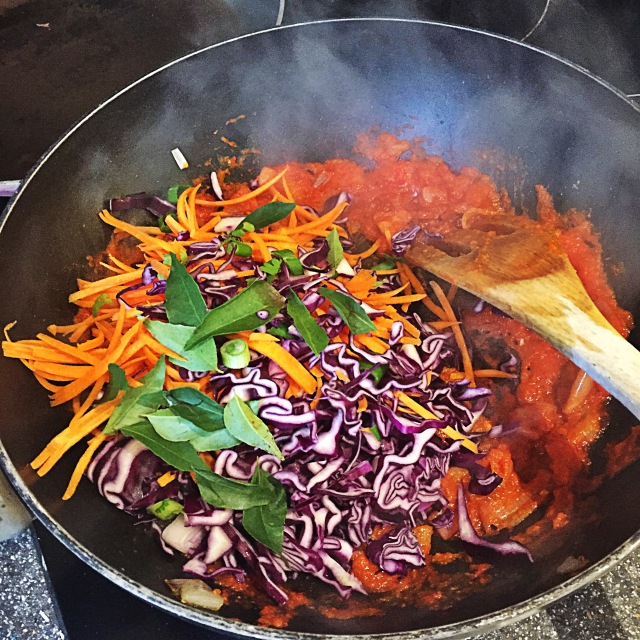Slice the top off an entire head of garlic, wrap it up in a little tin foil packet, drizzle with olive oil and season with sea salt and pepper.
Roast the garlic in the oven for about 45 minutes or until fragrant brown and caramelised. Set aside and allow to cool down as much as possible. You’ll know its ready when the entire house smells of roasted garlic.

In a frying pan, dry fry a few handfuls of pistachio and pine nuts. Watch carefully, toasting on medium-high heat and shake the pan often to get a quick but even toast.

In a small blender, toss in the toasted nuts, a generous handful of roughly chopped parsley (you can also use spinach; use a neutral green that’s not overpowering in flavour).
Add the juice and zest of one lemon, a large glug of good quality olive oil, some grated parm, salt and pepper and a splash of water.
Blitz well and add a bit of parsley if its not green enough. Add more olive oil to thin out if necessary. Season to taste and enjoy!

This is a great spread over some sourdough or focaccia or delicious with pasta!














